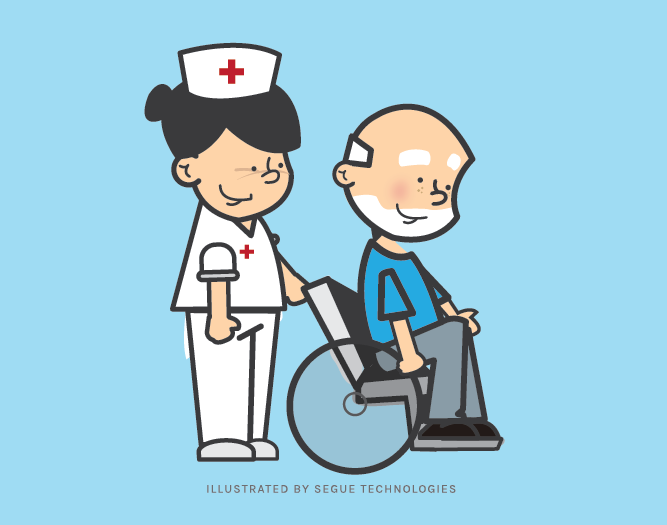
In my previous blog The Quality of Home Health Care I presented data provided by the Center for Medicare and Medicaid (CMS) that helps consumers find and assess home health care providers. As a follow-up to that, this blog addresses data from CMS that performs a similar function to help consumers find and assess nursing homes. Nursing Home Compare provides a range of useful information about over 15,000 Medicare and Medicaid-certified nursing home in the country.
What Information Can You Get about Nursing Homes?
The nursing homes that are listed on Nursing Home Compare all provide a level of care called “skilled care.” Skilled care is care given when you need skilled nursing or rehabilitation staff to manage, observe, or evaluate your care. Examples of skilled care include intravenous (IV) injections and physical therapy. Nursing Home Compare gathered information on:
- Performance of health inspections, quality measures, and hours of care provided per resident by staff performing nursing care tasks with a 5-star quality rating.
- Nursing home staffing information about the number of registered nurses, licensed practical or vocational nurses, physical therapists, and nursing assistants in each nursing home.
Nursing Home Compare’s 5 Star Rating
In order to make it easier to assess the overall performance and quality, Nursing Home Compare calculates a 5-star rating for nursing homes based on 3 parts: Health inspections, Quality Measures (QMs), and Staffing.
Each part receives its own star rating, with the overall rating ranging from 1 star to 5 stars. More stars indicate a higher level of quality. Each component of the 5-star rating is described below:
Health inspections rating: Based on the ratings of the 3 most recent comprehensive (annual) health and fire-safety nursing home inspections, and inspections due to complaints in the last three years. A greater emphasis is placed on more recent inspections.
Quality Measures (QM) rating: This rating is a combination of the values on 11 QMs. QMs are derived from clinical data reported by the nursing home. The 11 Quality Measures are:
- Long-Stay Residents:
- Percentage of residents whose need for help with activities of daily living has increased
- Percentage of high risk residents with pressure ulcers (sores)
- Percentage of residents who have/had a catheter inserted and left in their bladder
- Percentage of residents who were physically restrained
- Percentage of residents with a urinary tract infection
- Percentage of residents who self-report moderate to severe pain
- Percentage of residents experiencing one or more falls with major injury
- Percentage of residents who received an antipsychotic medication
- Short-stay residents:
- Percentage of residents with pressure ulcers (sores) that are new or worsened
- Percentage of residents who self-report moderate to severe pain
- Percentage of residents who newly received an antipsychotic medication
Staffing rating: Nursing home staffing levels based on a combination of the following two staffing measures: 1. Registered Nurse (RN) hours per resident per day; and 2. total staffing hours per resident, per day. Total staffing includes: RNs; Licensed Practical Nurses (LPNs) or Licensed Vocational Nurses (LVNs); and Certified Nurse Aids (CNAs). Staffing data is submitted by the facility and is adjusted for the needs of the nursing home residents.
This 5-star rating system has limitations, the staffing data and Quality measures data that is self-reported by the nursing home, rather than collected and reported by an independent agency. There are some differences in how different states carry out the inspection process, even though the standards are the same across the country.
However, this rating system also has some strengths. The Staffing rating considers differences in how sick the nursing home residents are in each nursing home, since that will make a difference in how many staff members are needed. The nursing home health inspection process looks at all major aspects of care in a nursing home (about 180 different items). Finally, the quality measures provide an important in-depth look at how well each nursing home performs on important aspects of care.
Which State has the Best Rating?
We thought it might be interesting to compare the patient survey results of the home health care data at state level to see which areas in the US has the best nursing home rating and the recommendation of patient for the Home Health agencies.
The following three visualizations provide information and insight into how each state performed with respect to quality of care, health inspections and staffing hours:
- Staffing Hours per Resident per day by Ownership: You can see for each state or specific City the staffing hours of the CNA, LPN and RN nurses by ownership
- Staffing Hours by States Versus the National Average : Shows the same staffing hours for each type of nurse for a specific state but compared with the national (Black Cross), which gives you a better view of how the different nursing home are ranked compare to the national average.
- Overall rating by States: Shows the overall rating for each states, with a bar chart that sort out the states from the best ones to the worst ones.
- Nursing Home Rating compared with Home Health Care Recommendation: Shows the nursing home rating compared with the home health care recommendation for each states.
